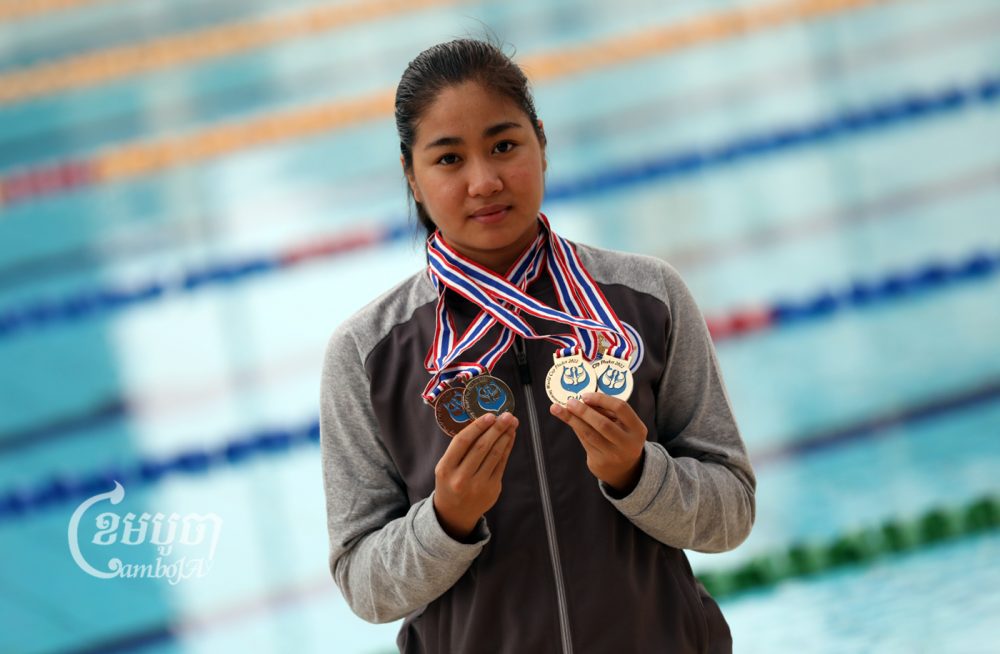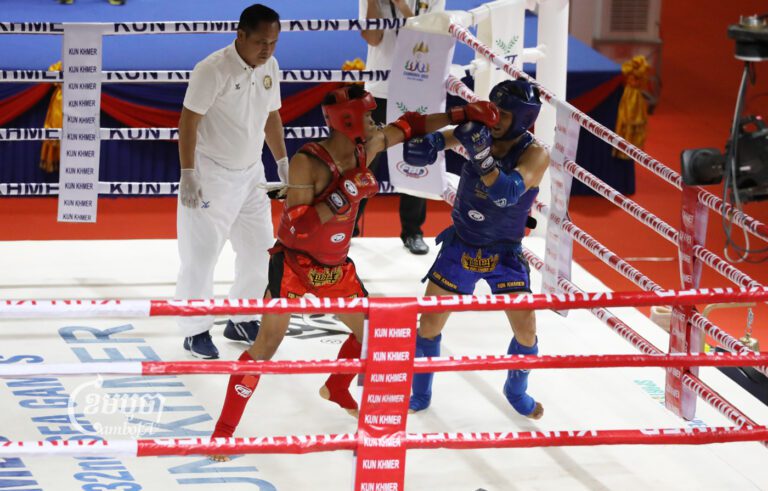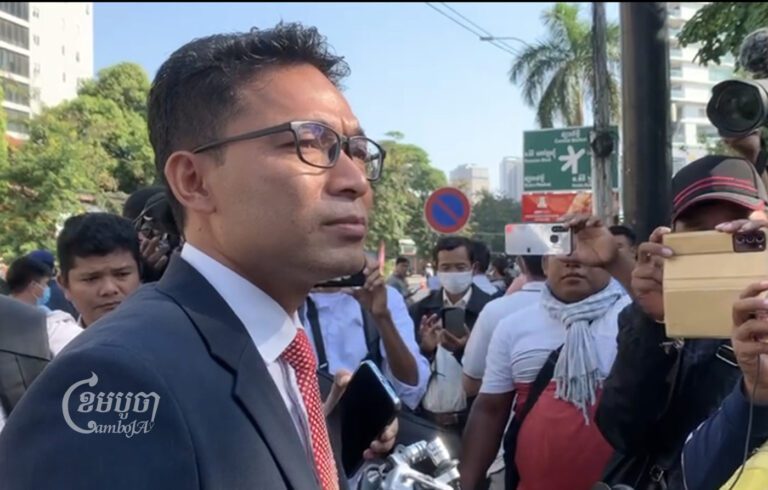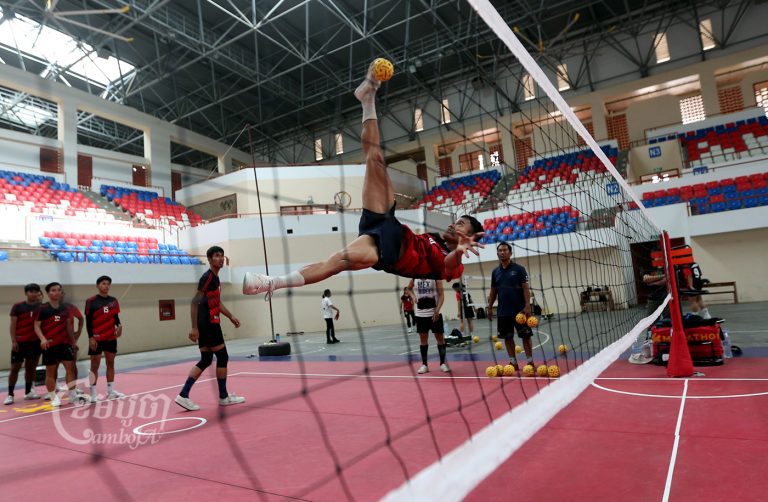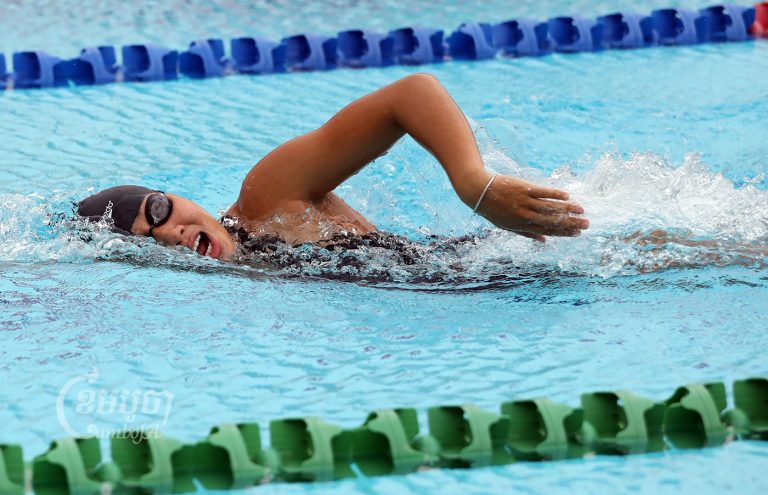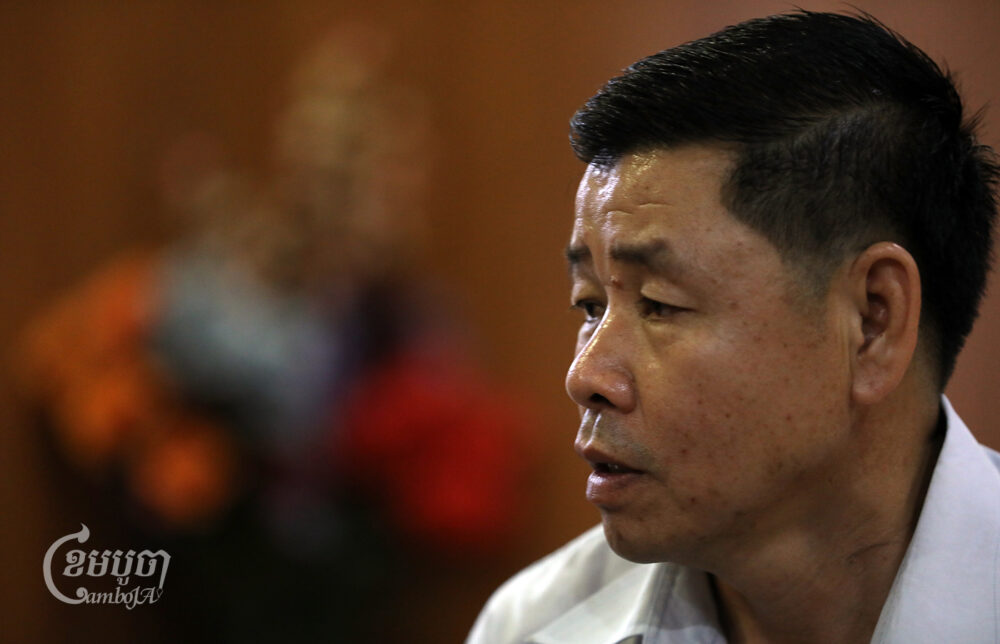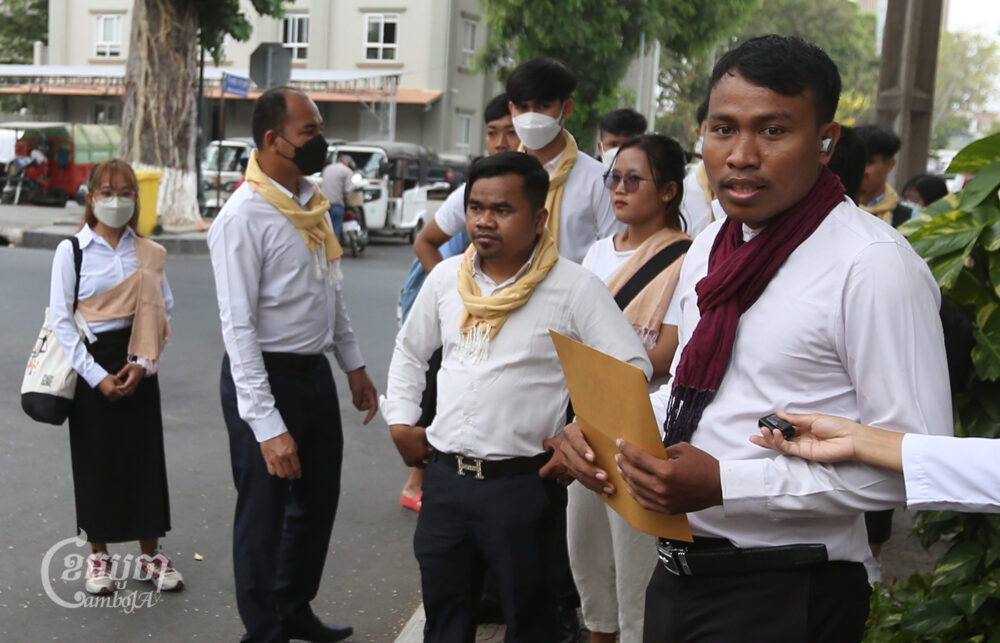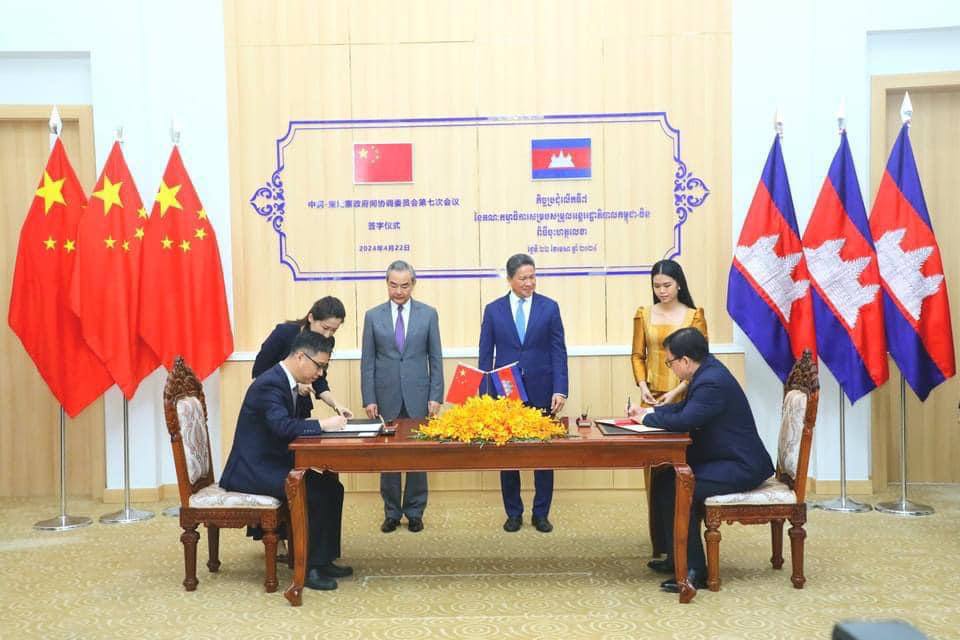Kaing Muynin, 16, started swimming competitively when she was 10 years old. Earlier this month, the 10th grade student won three gold medals for Cambodia in a regional competition, lapping swimmers in her age group from 15 other countries.
But not before she strapped long, plastic fins to her feet—which she and her five teammates had to borrow from rival teams, since Cambodia’s finswimming team is so new they don’t yet have their own professional gear.
Having just made the switch in April from regular swimming, Muynin is also brand-new to the sport, which requires athletes to use either a single fin or two fins on their feet and a snorkel.
“I won a bronze medal in the 50-meter bi-fin category and three gold medals for the 100-meter, 200-meter and 400-meter categories,” she said. “I won against athletes from Japan, Thailand and Singapore.”
Before adding flippers, Muynin, the youngest of three children in her family, first qualified for Cambodia’s national swimming team in 2019.
“My parents are not athletes and at first I only exercised for my health, but because of my coaches’ motivation, I have become a national team athlete,” she said.
When she began swimming, her father was opposed to her pursuing the sport because he wanted Muynin to focus on her education. But, after seeing her commitment, he later agreed to allow her to keep training.
After a few years of classic swim races, she had the chance to try finswimming, and found that she could swim faster with fins and a snorkel, and really enjoyed it.
“I just wanted to test my abilities. I saw that I am more natural with finswimming than normal swimming. As a result, I decided to change,” Muynin said.

Today, she swims nearly every day, for three hours in the morning, beginning at 5:30 a.m., and for three hours in the afternoon, until 6:30 p.m.
“I practice swimming and studying at the same,” Muynin said, adding that she spends a lot of time focused on her training but still finds time to do her homework.
While she only started finswimming about five months ago, her dedication already paid off with four medals in her second regional race.
However, Hem Thonponloeu, Muynin’s finswimming coach at the Cambodian Swimming Federation, which manages swim, diving and water polo athletics, admitted that Muynin and her teammates had a tough time in their first competition, this year’s Southeast Asian Games, which was hosted by Vietnam.
They lacked proper finswimming equipment and only trained for a month before competing, which resulted in the athletes using inefficient swim techniques, and some injuries, Thonponloeu said.
Still, four of Muynin’s teammates managed to win bronze medals.
After returning home from Vietnam, the team adjusted their training schedule, learning flutter kicks and practicing six hours per day, with regular swimming from Monday to Wednesday and finswimming from Thursday to Saturday.
When they traveled to Thailand earlier this month for the Finswimming World Cup, they changed their techniques significantly, Thonponloeu said.
But the team still didn’t—and still don’t—have their own professional finswimming fins.
“When we arrived in Thailand, we borrowed fins from [the teams from] Thailand and Singapore and then we practiced for two days before the competition,” the coach said.
Against the odds, Muynin took home three gold medals and one bronze.
“They have trained hard before competing in Thailand so their swimming methods improved,” Thonponloeu said.
As their coach, he said he felt proud of the athletes’ achievements, especially since finswimming is a new competition category for Cambodia’s swimming federation.

Another 16-year-old national finswimmer, Kheun Bunpich Morakat, said she learned to swim in 2016, started competing in 2017 and switched to finswimming earlier this year, like Muyin.
“Finswimming is more difficult to practice than regular swimming because whenever I wear the fins to flutter kick, it causes me to hurt the skin on my feet,” Bunpich Morakat said.
Compared to the SEA Games, she said her performance improved at the World Cup contest and she gained valuable experience.
“Even though I did not get any medals, I came in fourth place” in the 50-meter and 100-meter bi-fin race, Bunpich Morakat said.
She also learned swim movement and breathing techniques from other athletes, which she will use to train before next year’s SEA Games.
Vath Chamroeun, secretary general of the Cambodian SEA Games Organizing Committee, said the committee often sends athletes abroad to train, compete at a higher level, and improve their skills and confidence.
“This sending [abroad] is a strategy in terms of increasing the athletic ability of our athletes to be ready to compete in the 2023 SEA Games,” he said.

While the national finswimmers wait for their order of professional fins to arrive in Phnom Penh, they continue to practice using standard fins.
Muynin, the gold medalist, said finswimmers must be very patient—and have strong, energetic feet.
Her recent wins have inspired her to continue striving for greatness, she said.
“I am excited about this success and I will continue additional training to be ready for the 2023 SEA Games.”


